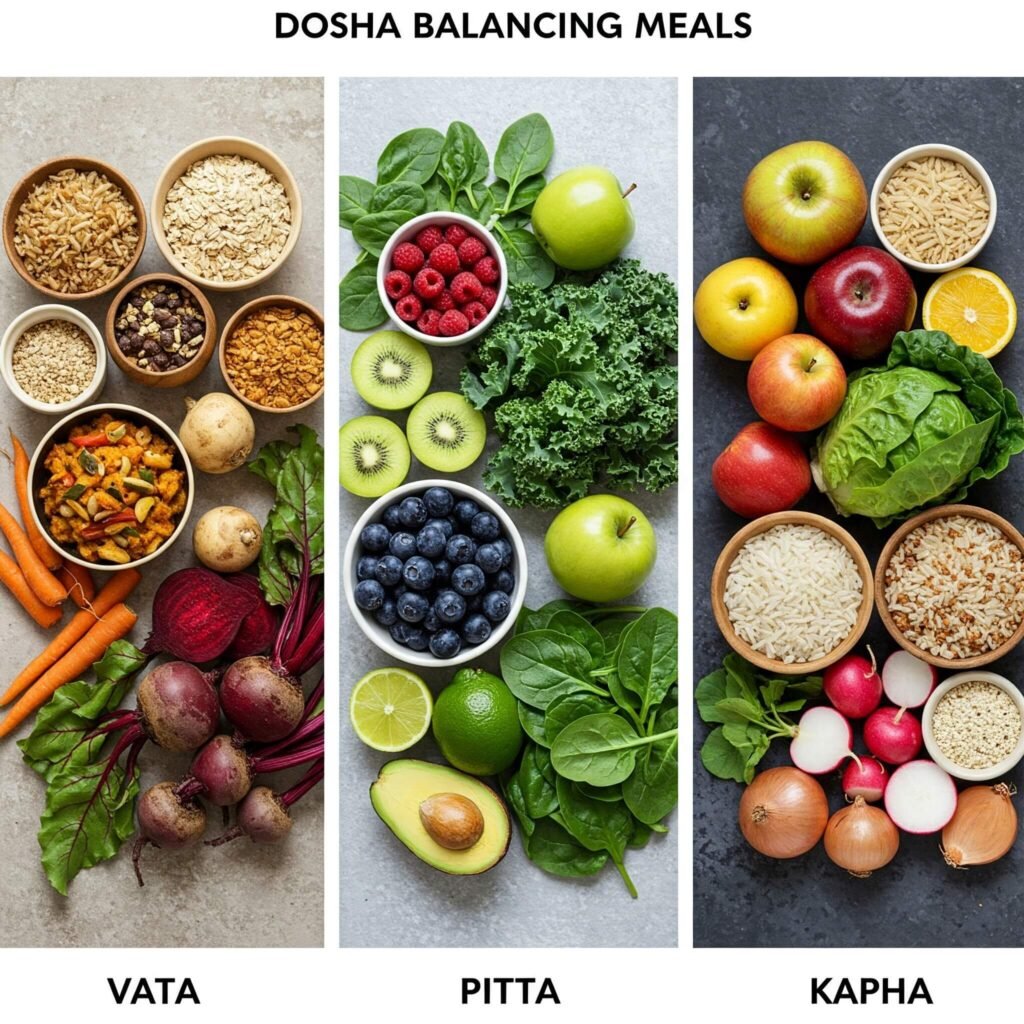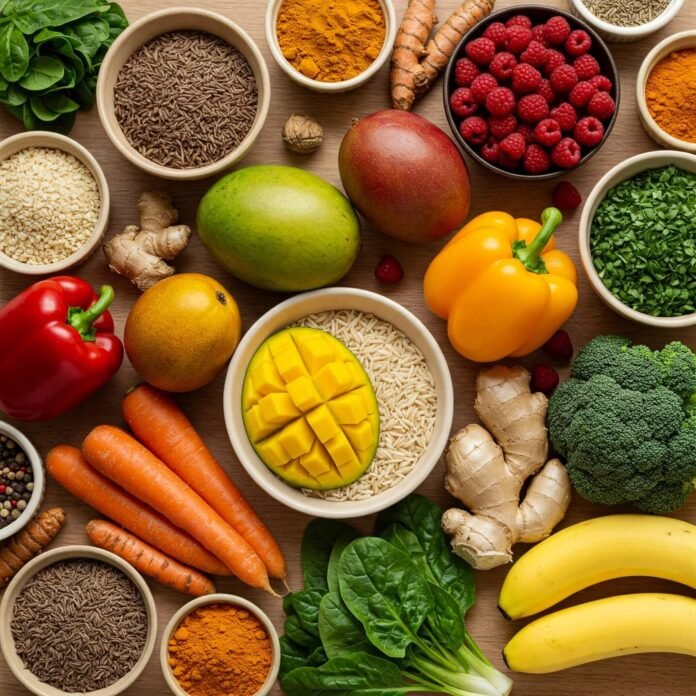Welcome to a journey towards vibrant health and well-being through the timeless wisdom of Ayurveda. For centuries, this ancient Indian system of medicine has emphasized the profound connection between food and our overall health. Understanding and implementing the principles of the Ayurvedic Diet can be a transformative step towards achieving balance, harmony, and optimal vitality. This comprehensive guide will walk you through the core tenets of the Ayurvedic Diet, providing practical tips and actionable strategies to integrate these powerful principles into your daily life.
Understanding the Core Principles of the Ayurvedic Diet
The Ayurvedic Diet is not just about what you eat, but also how, when, and why you eat. It’s a personalized approach that considers your unique constitution, known as your dosha. The three primary doshas are Vata, Pitta, and Kapha, each representing a unique blend of physical and mental characteristics. Understanding your dominant dosha is the first step in tailoring the Ayurvedic Diet to your individual needs.
- Vata: Governs movement, circulation, and nerve impulses. Individuals with a dominant Vata dosha tend to be light-framed, energetic, and creative.
- Pitta: Controls metabolism, digestion, and body temperature. Pitta-dominant individuals are often intelligent, focused, and have a strong digestive fire.
- Kapha: Provides structure, lubrication, and stability. Kapha-dominant individuals tend to be grounded, calm, and have a strong build.

Tailoring Your Ayurvedic Diet to Your Dosha for Optimal Health
The beauty of the Ayurvedic Diet lies in its personalized recommendations. While there are general guidelines, the emphasis is on choosing foods that balance your dominant dosha and any current imbalances.
Ayurvedic Diet Recommendations for Vata Balance
To pacify Vata, focus on warm, heavy, and grounding foods.
- Favor: Warm cooked grains (rice, oats), root vegetables (sweet potatoes, carrots), healthy fats (ghee, sesame oil), and warming spices (ginger, cinnamon).
- Limit: Cold foods, raw vegetables, beans, and excessive caffeine.
- Example: A warm bowl of rice porridge with ghee and cinnamon for breakfast.
Ayurvedic Diet Recommendations for Pitta Balance
To cool and soothe Pitta, opt for cooling, slightly dry, and heavy foods.
- Favor: Sweet fruits (melons, mangoes), cooling vegetables (cucumber, leafy greens), grains (barley, basmati rice), and cooling spices (coriander, mint).
- Limit: Spicy, oily, and fermented foods, as well as excessive sour and salty tastes.
- Example: A salad with cooling greens, cucumber, and a light coconut dressing for lunch.
Ayurvedic Diet Recommendations for Kapha Balance
To stimulate and lighten Kapha, choose light, dry, and warm foods.
- Favor: Light grains (barley, millet), pungent vegetables (onions, garlic), fruits (apples, berries), and warming spices (ginger, black pepper).
- Limit: Heavy, oily, and sweet foods, as well as dairy products.
- Example: A vegetable stir-fry with ginger and black pepper for dinner.

Essential Principles of the Ayurvedic Diet for Enhanced Well-being
Beyond dosha-specific recommendations, the Ayurvedic Diet emphasizes several fundamental principles that contribute to optimal health:
- Eat Whole, Unprocessed Foods: Focus on fresh, seasonal, and locally sourced ingredients whenever possible.
- Mindful Eating: Pay attention to your food, savor each bite, and eat without distractions.
- Eat at Regular Times: Maintain consistent meal timings to support healthy digestion.
- Eat According to Your Digestive Capacity: Avoid overeating and stop when you feel satisfied, not full.
- Combine Foods Properly: Certain food combinations can hinder digestion. For example, avoid eating fruit with main meals. (Learn more about food combining: [Link to a reputable Ayurvedic resource on food combining])
- Use Spices Wisely: Spices not only add flavor but also aid digestion and have therapeutic properties. (Explore the benefits of Ayurvedic spices: [Link to a reputable resource on Ayurvedic spices])
- Drink Plenty of Warm Water: Warm water aids digestion and detoxification.
- Prioritize Freshly Cooked Meals: Freshly prepared food has more prana (life force).
Integrating the Ayurvedic Diet into Your Modern Lifestyle
Implementing the Ayurvedic Diet doesn’t require drastic changes overnight. Start by understanding your dominant dosha (you can find online quizzes or consult an Ayurvedic practitioner). Gradually incorporate the dietary recommendations that align with your constitution. Pay attention to how different foods make you feel and adjust accordingly.

Conclusion: Embracing the Ayurvedic Diet for a Healthier You
The Ayurvedic Diet offers a holistic and personalized approach to eating that goes beyond mere nutrition. By understanding your unique constitution and following these timeless principles, you can cultivate a deeper connection with your body, enhance your digestion, and pave the way for optimal health and well-being. Embrace the wisdom of Ayurveda and embark on a delicious journey towards a healthier and more balanced you.
Outbound Reference Links:
- [Link to a reputable Ayurvedic website or educational resource]
- [Link to a scientific article or study related to the benefits of mindful eating]
- [Link to a trusted source on the principles of Ayurveda]





































